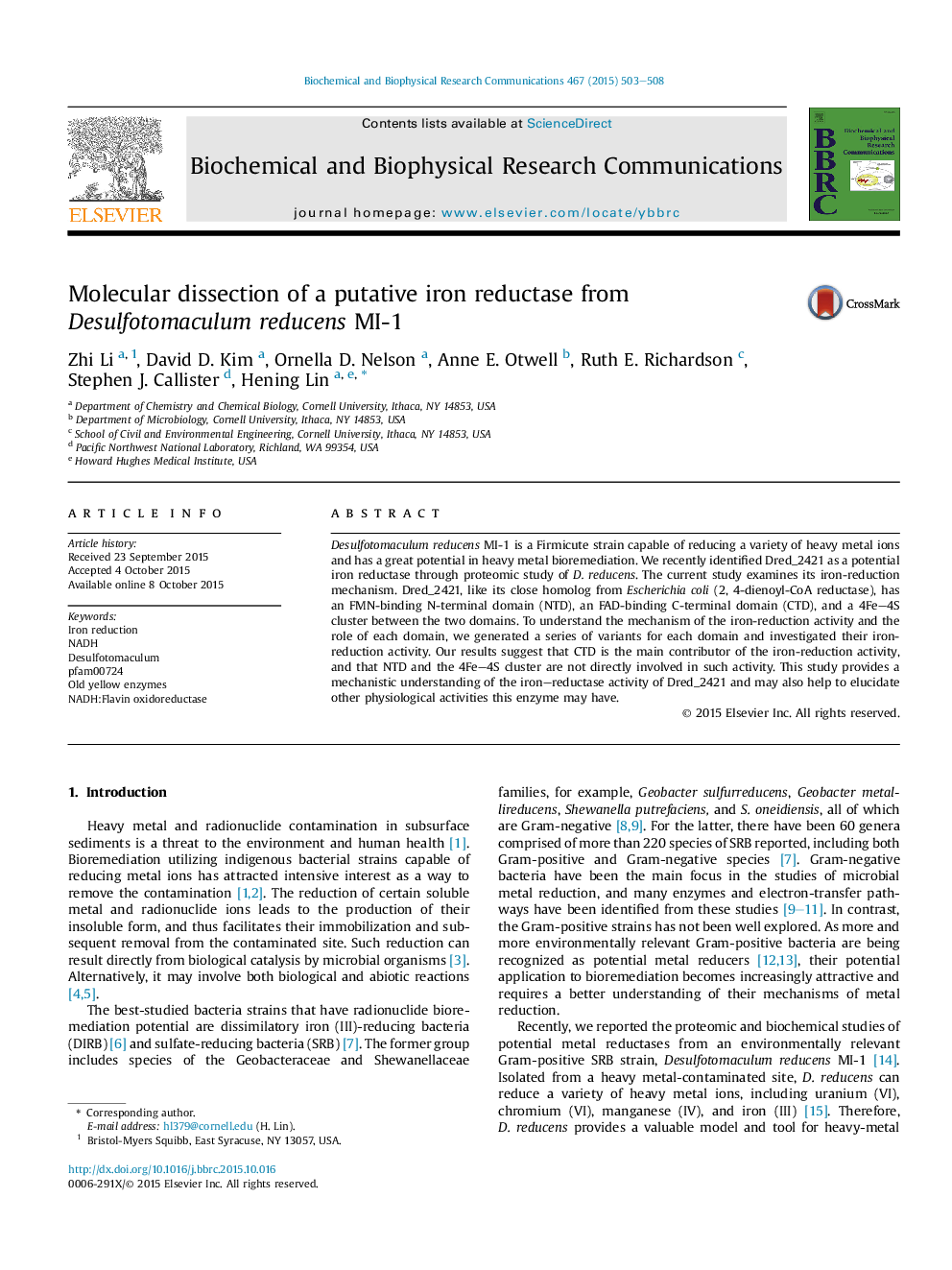| Article ID | Journal | Published Year | Pages | File Type |
|---|---|---|---|---|
| 10749285 | Biochemical and Biophysical Research Communications | 2015 | 6 Pages |
Abstract
Desulfotomaculum reducens MI-1 is a Firmicute strain capable of reducing a variety of heavy metal ions and has a great potential in heavy metal bioremediation. We recently identified Dred_2421 as a potential iron reductase through proteomic study of D. reducens. The current study examines its iron-reduction mechanism. Dred_2421, like its close homolog from Escherichia coli (2, 4-dienoyl-CoA reductase), has an FMN-binding N-terminal domain (NTD), an FAD-binding C-terminal domain (CTD), and a 4Fe-4S cluster between the two domains. To understand the mechanism of the iron-reduction activity and the role of each domain, we generated a series of variants for each domain and investigated their iron-reduction activity. Our results suggest that CTD is the main contributor of the iron-reduction activity, and that NTD and the 4Fe-4S cluster are not directly involved in such activity. This study provides a mechanistic understanding of the iron-reductase activity of Dred_2421 and may also help to elucidate other physiological activities this enzyme may have.
Keywords
Related Topics
Life Sciences
Biochemistry, Genetics and Molecular Biology
Biochemistry
Authors
Zhi Li, David D. Kim, Ornella D. Nelson, Anne E. Otwell, Ruth E. Richardson, Stephen J. Callister, Hening Lin,
